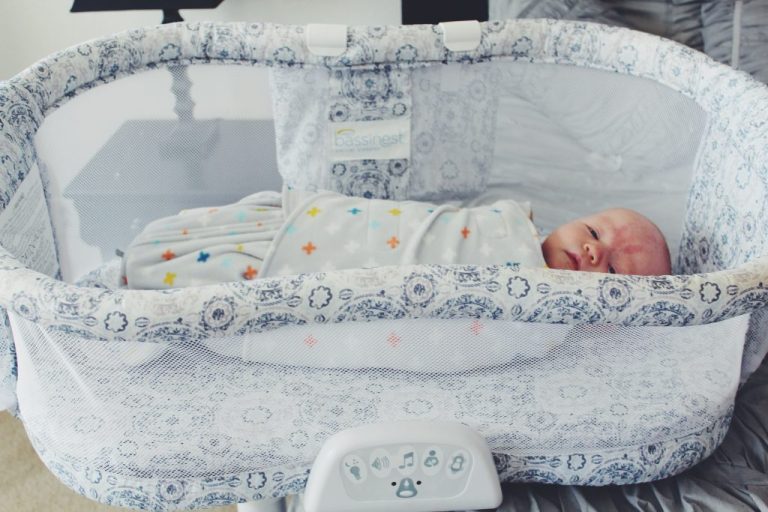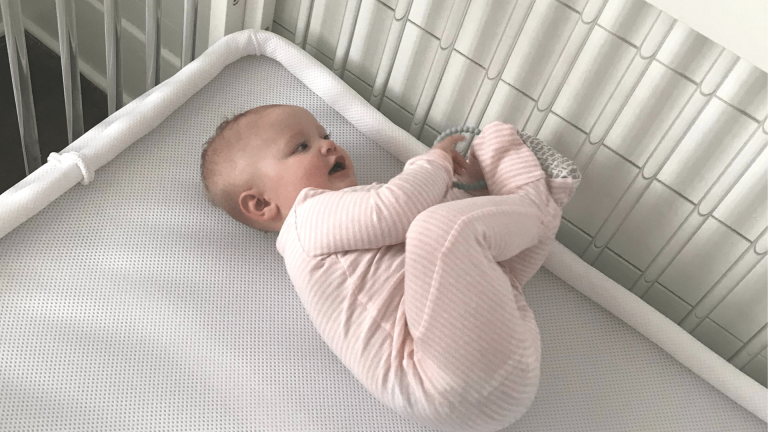When Can You Put Blanket in Crib?
According to the American Academy of Pediatrics, an estimated 3,500 infants die each year in the United States due to sleep-related causes.
Ensuring the safety of a baby during sleep is paramount, and one common concern for parents is when it is safe to introduce a blanket into the crib.
This article aims to provide evidence-based guidelines and recommendations on the appropriate age and circumstances for using a blanket in a baby’s sleep routine.
By following these guidelines, parents can create a safe sleep environment and promote the baby’s comfort and security.
Recommended Age for Introducing a Blanket in Crib
Ideally, it is recommended to wait until the baby is at least 18 months old before introducing a blanket into the crib. This age recommendation is based on safety guidelines to reduce the risk of Sudden Infant Death Syndrome (SIDS), suffocation, entrapment, or strangulation.
Soft bedding, including blankets, can be hazardous in the crib for infants under 12 months old. The safest sleep environment for a baby is a bare crib without comforters, bumpers, pillows, fleece, sheepskin, or stuffed toys. Only a fitted sheet is necessary for a baby’s sleep.
After 18 months, a thin blanket and a small lovey can be used, but soft bedding should still be avoided, even if the baby is placed on top of the blanket. It is important to prioritize the safety and well-being of the baby when considering the introduction of a blanket into their sleep routine.
Safety Guidelines for Using a Blanket in the Crib
To ensure the safety of your baby, it is important to follow specific safety guidelines when using a blanket in the crib.
Blankets can pose hazards such as suffocation, entrapment, or strangulation. The safest sleep environment for a baby is a bare crib without comforters, bumpers, pillows, or stuffed toys. Only a fitted sheet is necessary for a baby’s sleep.
It is generally recommended to avoid using blankets in the crib until the age of one, as infants under 12 months are at a higher risk of suffocation. Once the baby can roll over independently, the risk decreases.
If you choose to introduce a blanket, ensure it is thin and small, and avoid using soft bedding. Keep a close eye on your baby to ensure the blanket remains safe and doesn’t take up too much space.
Consider using a sleep sack as an alternative to blankets to reduce risks and keep babies warm during colder weather.
Transitioning to a Blanket in the Crib
When transitioning to a blanket in the crib, it is important to follow safety guidelines to ensure the well-being of your baby.
While blankets should generally be avoided until the baby is at least one year old to reduce the risk of suffocation, there comes a time when it is safe to introduce a blanket.
Once your baby can roll over independently, usually around six months of age, the risk of suffocation decreases. However, it is crucial to consider the size of the crib and the baby’s growth before adding a blanket.
The blanket should not take up too much space and should be the only additional bedding in the crib. Close supervision is necessary to ensure the blanket remains safe and doesn’t pose any hazards.
Alternatively, sleep sacks can be used as a safer alternative to blankets.
Considerations Before Putting a Blanket in the Crib
Before placing a blanket in the crib, it is important to take certain factors into consideration. Safety should always be the top priority when it comes to a baby’s sleep environment. Blankets can pose suffocation hazards and increase the risk of SIDS.
It is generally recommended to avoid using blankets in the crib until the age of one. Once the baby can roll over independently, the risk decreases. When deciding to introduce a blanket, consider the size of your baby and how much bedding is appropriate. Placing too much bedding can be dangerous.
It is also crucial to remove the blanket if the baby rolls over on their own to reduce risks. Supervision is necessary to ensure the blanket remains safe and doesn’t take up too much space. Alternatively, sleep sacks can be used as a safer alternative to blankets.
Always prioritize the safety and well-being of your baby when making decisions about their sleep environment.
Supervision and Alternatives for Using a Blanket in the Crib
Supervising your baby and exploring alternative options are essential when considering the use of a blanket in the crib. While it is generally recommended to avoid using blankets in the crib until the age of 1, there may be situations where you feel the need to provide additional warmth for your baby.
In such cases, it is important to closely supervise your baby to ensure the blanket remains safe and doesn’t take up too much space. However, it is worth considering alternative options such as using a sleep sack.
Sleep sacks are a safe and convenient way to keep your baby warm without the risks associated with blankets. They reduce the risk of suffocation and provide a cozy environment for your baby to sleep in.
Always prioritize your baby’s safety and consider their individual needs before introducing any additional bedding into the crib.
Conclusion
It is important to prioritize the safety and well-being of a baby during sleep by following the recommended guidelines for introducing a blanket into the crib.
The appropriate age for introducing a blanket is typically around one year old when the baby is able to roll over and move independently. Safety guidelines include using a lightweight blanket, ensuring it is securely tucked in, and avoiding loose bedding or soft objects in the crib.
One interesting statistic is that according to the American Academy of Pediatrics, suffocation is the leading cause of injury-related death among infants under the age of one.




